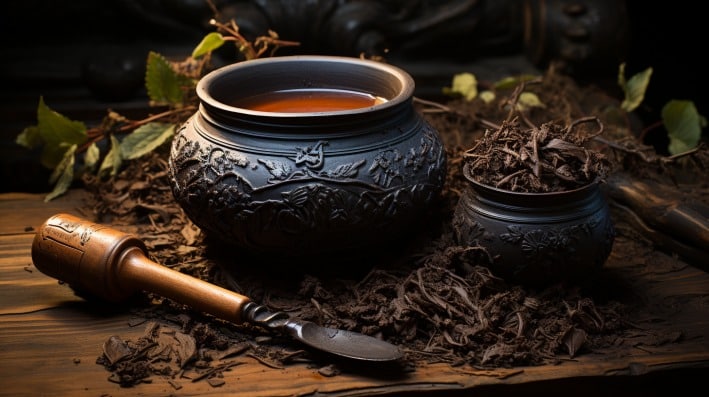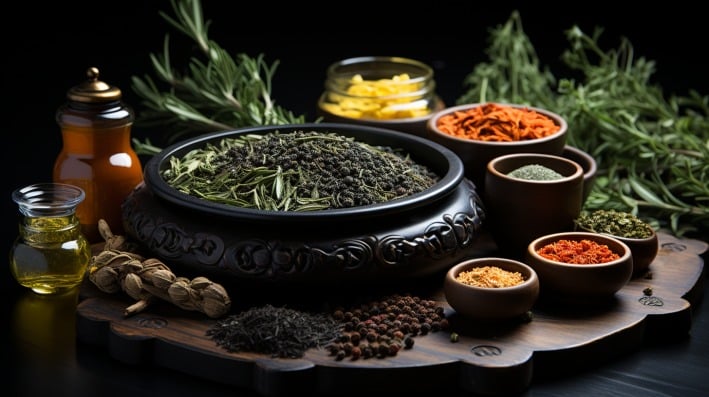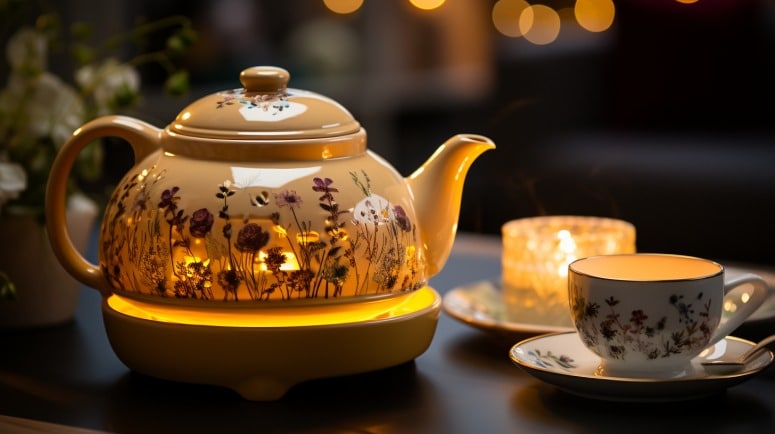Tea lovers, gather ’round! If you’re a tea connoisseur like me, then you probably appreciate the delicate balance of flavors that a perfectly brewed cup of tea provides. But imagine sipping your favorite tea, only to discover that your beloved tea plants are under attack by a minuscule yet mighty enemy – tea scales!
Tea scales may be tiny, but their impact on tea plants can be devastating. These pesky pests not only mar the beauty of your tea plants but also weaken them, affecting the overall flavor and health of your tea leaves. In this in-depth article, we’ll delve into the world of tea scales, exploring their life cycle, identification, control methods, and more. So grab a cup of tea (hopefully not infested with tea scales!) and let’s dive in!

Table of Contents
Life Cycle of Tea Scales
Now that we’ve set the stage, it’s time to take a closer look at the life cycle of tea scales. Understanding their life cycle is crucial in effectively managing and controlling these unwanted guests.
Tea scales belong to the scientific genus Fiorinia theae, commonly known as tea scale. These tiny insects undergo a fascinating life cycle consisting of several overlapping generations. The life cycle begins with the emergence of adult female scales in early spring. These females lay tiny, oval-shaped eggs on the undersides of tea leaves, usually in clusters.
Within a few weeks, the eggs hatch, giving way to the crawler stage. These young scales are small, mobile insects that wander the plant in search of a suitable feeding site. Once they find a cozy spot on the upper leaf surface, they insert their mouthparts into the plant tissues and begin to feed on the plant juices.
As they feed and grow, the crawlers molt and transition into nymphs, becoming immobile and developing a hard protective shell, or scale, over their bodies. Underneath this protective covering, they continue to feed, eventually becoming adult females or males. The males are smaller and have elongated bodies, whereas the females are more rounded.
Identification and Damage
Now that we’re familiar with the life cycle of tea scales, let’s move on to identifying these small but troublesome insects, as well as the damage they can cause to tea plants.
To identify tea scales, one needs to closely inspect the leaves and branches of the tea plant. These scales are typically flat and oval-shaped, ranging in size from tiny specks to slightly larger bumps. They often have a yellow or brown color, blending in with the natural hues of the tea leaves. When a heavy infestation occurs, the scales can form dense clusters on the major limbs and branches of the tea plant.
The damage caused by tea scales is primarily due to their feeding habits. As they insert their mouthparts into the plant tissues and suck out the sap, they deplete the plant’s resources and weaken its overall health. This can lead to stunted growth, yellowing of leaves, and even the death of important limbs.
Moreover, tea scales produce a sticky substance known as honeydew, which serves as a medium for the growth of mold and attracts other insects. This sticky residue can also inhibit the normal functioning of the tea plant, interfering with photosynthesis and the plant’s ability to absorb nutrients.

Natural Enemies and Control Methods
Dealing with tea scales can be a challenging task, but fear not! Nature has its own arsenal of beneficial insects that can help keep these pesky pests in check. Ladybugs, lacewings, and parasitic wasps are just a few examples of natural enemies that feed on tea scales and can aid in controlling their populations.
In addition to relying on beneficial insects, there are various control methods available to manage tea scales. One effective approach is using oil sprays or horticultural oils, which suffocate the scales and disrupt their life cycle. These sprays should be applied during the crawler stage, ensuring maximum contact with the scales.
Contact insecticides, specifically those labeled for use on scale insects, can also be used to target and kill tea scales. It’s important to carefully follow the instructions on the product label and apply the insecticide when the scales are most susceptible, typically during the crawler stage or early in the infestation.
To improve control and minimize the chances of reinfestation, it’s essential to maintain good cultural practices. Regularly inspect your tea plants, prune unhealthy limbs, and keep the overall plant health in check. Proper air circulation and sunlight exposure can also discourage tea scale infestations.
Preventative Measures
Prevention is always better than cure when it comes to tea scales. By implementing a few simple practices, you can minimize the chances of your tea plants falling victim to these pesky pests. Here are some effective preventative measures:
Inspect and quarantine: Before introducing any new tea plants into your garden, thoroughly inspect them for signs of tea scale infestation. Quarantine new plants for a week or two to ensure they are free from any unwanted hitchhikers.
Cleanliness is key: Keep your tea plants and the surrounding area clean and free from debris, fallen leaves, and other plant matter. This helps reduce the hiding places for tea scales and discourages their infestation.
Pruning and trimming: Regularly prune your tea plants to remove dead, damaged, or weak limbs. This promotes air circulation and prevents the accumulation of moisture, which can create an environment conducive to tea scale infestation.
Natural predators: Encourage the presence of beneficial insects that feed on tea scales by planting companion plants that attract these natural enemies. Ladybugs, parasitic wasps, and lacewings can help keep tea scales under control.
Implement cultural practices: Maintain a healthy tea growing environment by providing adequate sunlight, proper watering, and well-draining soil. Healthy plants are more resistant to tea scale infestations.
Repeat applications: If you opt for insecticidal control methods, remember that tea scales have several overlapping generations. Repeat applications may be necessary to target newly hatched scales and break their life cycle.
Conclusion
Understanding the tea scale life cycle is vital in combating this tiny yet troublesome pest. From the emergence of male tea scales to the development of camellia scale, each stage plays a crucial role in their survival. These small insects, often overlooked like specks on kitchen scales, can inflict heavy infestations that negatively impact the health of tea plants.
As they go through their first molt, tea scales emerge as adult males and females, each sporting unique features. The body of a tea scale, with its dark coloring, helps it blend into the surroundings and determine the optimal time to bloom. Bloom and flowering, important stages in the life cycle, occur under specific temperature conditions, frequently influenced by the presence of citrus plants nearby.
Keeping tea plants healthy is crucial in preventing tea scale infestations. Unhealthy plants are more susceptible to attack, and by taking proactive measures, such as regular inspection and maintaining optimal environmental conditions, one can avoid the emergence of these small pests altogether.
In this journey through the tea scale world, we’ve explored their life cycle, identified the challenges they pose, and discussed control methods. By spreading awareness and knowledge, gardeners can effectively combat tea scales and ensure the well-being of their tea plants.
So let’s raise a teacup to education, prevention, and the pursuit of a tea garden that flourishes with the fragrance of perfectly brewed leaves. Remember, with the right care and attention, you can protect your tea plants and enjoy delightful cups of tea, free from the clutches of tea scales.
How can I identify tea scales on my tea plants?
Tea scales can be identified by carefully inspecting the leaves and branches of your tea plants. Look for small, flat, oval-shaped insects ranging in color from yellow to brown. They often blend in with the natural hues of the tea leaves, making them difficult to spot. Heavy infestations may result in dense clusters on major limbs and branches. Regularly checking for the presence of these scales and keeping a close eye on any yellowing or stunted growth can help identify an infestation.
What kind of damage can tea scales cause to tea plants?
Tea scales damage tea plants by feeding on the plant juices, depleting the plant’s resources, and weakening its overall health. This can lead to stunted growth, yellowing of leaves, and even the death of important limbs. Furthermore, tea scales excrete a sticky substance called honeydew, which can promote the growth of mold and attract other insects. This sticky residue can hinder the plant’s ability to photosynthesize and absorb nutrients, further compromising its health.
How can I control tea scale infestations naturally?
Controlling tea scale infestations can be achieved naturally by relying on beneficial insects that prey on these pests. Encouraging the presence of ladybugs, lacewings, and parasitic wasps in your tea garden can help keep tea scales in check. Additionally, cultural practices such as maintaining good plant health, providing adequate sunlight and water, and keeping the growing area clean can reduce the chances of infestation. Pruning damaged or weak limbs and promoting air circulation also discourage tea scale infestations.
Can insecticides be used to control tea scales?
Yes, insecticides can be used to control tea scale infestations. Contact insecticides labeled specifically for scale insects can be effective in targeting and killing tea scales. It’s crucial to carefully follow the instructions on the product label, applying the insecticide when scales are most vulnerable, such as during the crawler stage or early infestation. However, it’s important to note that insecticides may also affect beneficial insects, so consider using them as a last resort or in conjunction with other natural control methods.


